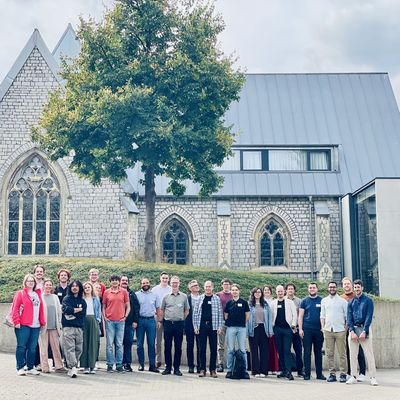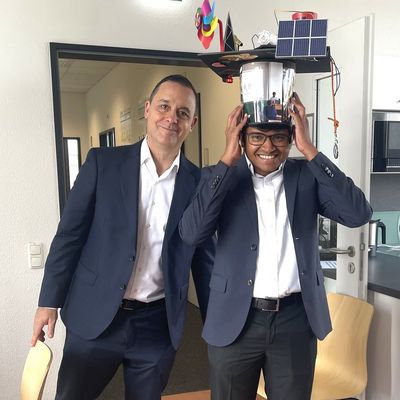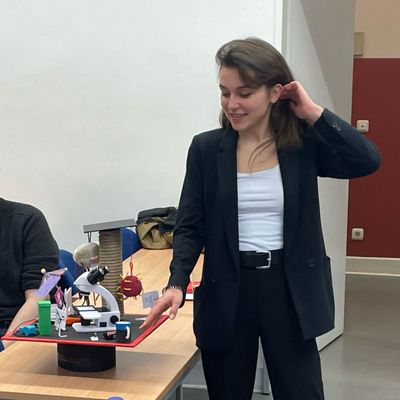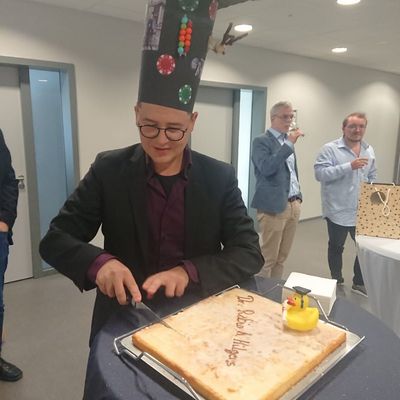Leonardo Boledi successfully defended his dissertation
Congratulations to Leonardo Boledi for the successful defense of his dissertation on "Numerical Multiphysics Modeling with Space-Time Finite Elements: Assessing the Performance of Thermal Melting Probes".
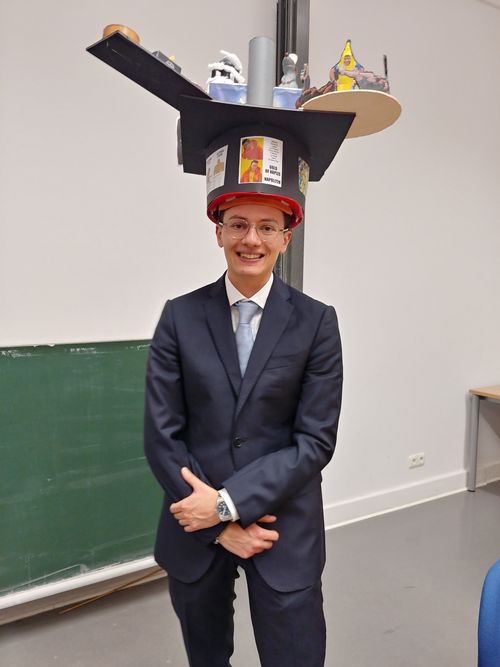
Leonardo Boledi successfully defended his thesis "Numerical Multiphysics Modeling with Space-Time Finite Elements: Assessing the Performance of Thermal Melting Probes".
In his work, he derived a model hierarchy with increasing complexity to analyze different aspects of a melting probe. The abstract of his thesis is as follows:
"Thermal melting probes have been a powerful research tool for geoscientists since the 1960s. In recent years, the research interest in this technology has risen in view of space exploration, as future mission concepts plan to use autonomous cryobots. To assess their performance, we have to model a complex multiphysics scenario. Moreover, specific numerical techniques have to be employed to simulate moving domains and phase change.
In this thesis, we derive a model hierarchy of increasing complexity to analyze different aspects of a melting probe. First, we examine the melting head. Given the geometry and the arrangement of the heating cartridges, we present a model for the temperature evolution in the melting head and the heat fluxes at the boundaries. That is, we have a workflow to estimate the energy losses in the hull of the probe that can be combined with the design process of the melting head.
Second, we examine the forward motion of the probe, namely we predict its melting velocity based on the ambient ice properties. We present a transient close-contact melting model where the processes in the melt film that determine the melting velocity are coupled to the macro-scale temperature evolution. The motion of the probe is then simulated via the Virtual Ring Shear-Slip Mesh Update Method. For the first time, the mesh-update method is integrated in a dynamically coupled manner, where the mesh velocity comes from the process model itself.
Third, we examine the phase-change process and the evolution of the melt channel. Via a level-set method, we model the flow field and the convection-coupled temperature evolution in the solid and liquid phases. As we employ a finite element method with first-order basis functions, a ghost-cell method is introduced to retrieve the heat-flux jump at the phase interface and extended to the space-time finite element framework.
The aforementioned problems give rise to mathematical models based on partial differential equations that we solve via a time-discontinuous space-time finite element scheme. The employed formulation naturally involves the movement of the computational domain and is well-suited for the examined problem."



